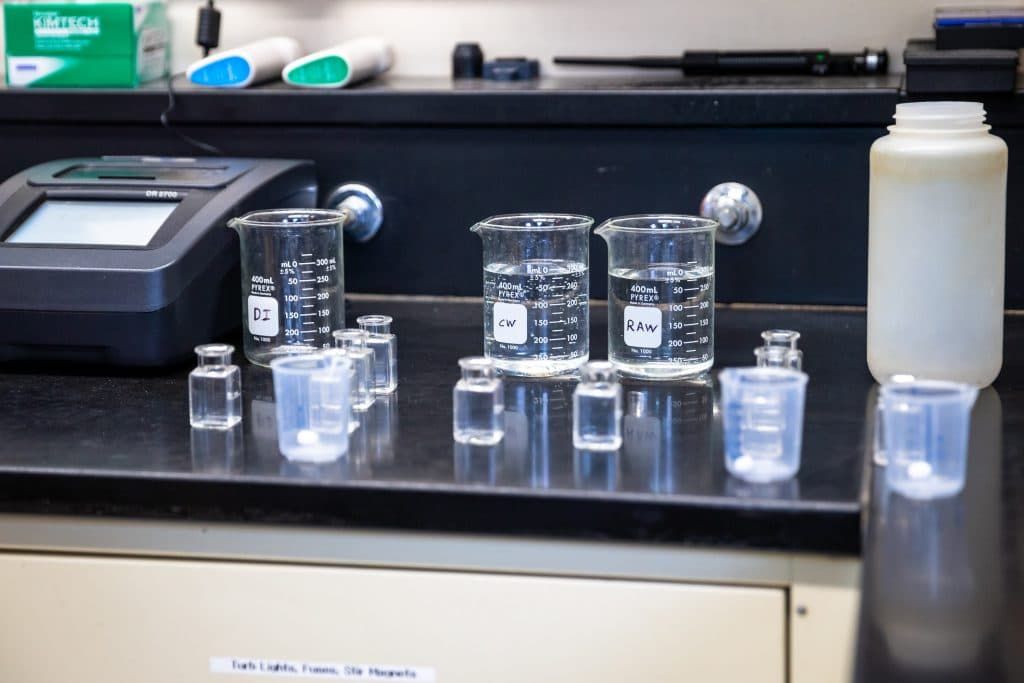
Lead Information
IMPORTANT INFORMATION ABOUT LEAD IN YOUR DRINKING WATER
Dillon Valley District has found elevated levels of lead in some homes/buildings within the service area
Our system found elevated levels of lead in drinking water in some homes/buildings. Lead can cause serious health problems, especially for pregnant women and children 6 years and younger.
Please read this notice closely to see what you can do to reduce lead in your drinking water.
Health Effects of Lead
Lead can cause serious health problems if too much enters your body from drinking water or other sources. It can cause damage to the brain and kidneys, and can interfere with the production of red blood cells that carry oxygen to all parts of your body. The greatest risk of lead exposure is to infants, young children and pregnant women. Scientists have linked the effects of lead on the brain with lowered IQ in children. Adults with kidney problems and high blood pressure can be affected by low levels of lead more than healthy adults. Lead is stored in the bones and it can be released later in life. During pregnancy, the child receives lead from the mother’s bones, which may affect brain development.
Sources of Lead
Lead is a common metal found in the environment. Drinking water is one possible source of lead exposure. The main sources of lead exposure are lead-based paint and lead-contaminated dust or soil, and some plumbing materials. In addition, lead can be found in certain types of pottery, pewter, brass fixtures, food and cosmetics. Other sources include exposure in the work place and exposure from certain hobbies (lead can be carried on clothing or shoes).
New brass faucets, fittings, and valves, including those advertised as "lead-free", may contribute lead to drinking water. The law currently allows end-use brass fixtures, such as faucets, with up to 8 percent lead to be labeled as "lead free". However, plumbing fixtures labeled National Sanitation Foundation (NSF) certified may only have up 2 percent lead. Consumers should be aware of this when choosing fixtures and take appropriate precautions.
Our community does not have any lead in its source water or water mains in the street. When water is in contact with pipes or plumbing that contains lead for several hours, the lead may enter drinking water. Homes built before 1986 are more likely to have plumbing containing lead. New homes may also have lead; even "lead-free" plumbing may contain some lead. EPA estimates that 10 to 20 percent of a person’s potential exposure to lead may come from drinking water. Infants who consume mostly formula mixed with the lead-containing water can receive 40 to 60 percent of their exposure to lead from drinking water.
Don’t forget about other sources of lead such as lead paint, lead dust, and lead in soil. Wash your children’s hands and toys often as they can come into contact with dirt and dust containing lead.
Steps You Can take to Reduce Your Exposure to Lead in Your Water
Run your water to flush out lead. Run water for 15-30 seconds or until it becomes cold or reaches a steady temperature before using it for drinking or cooking, if it hasn’t been used for several hours. This flushes lead-containing water from the pipes.
Use cold water for cooking and preparing baby formula. Do not cook with or drink water from the hot water tap; lead dissolves more easily into hot water. Do not use water from the hot water tap to make formula.
Do not boil water to remove lead. Boiling water will not reduce lead.
Look for alternative sources or treatment of water. You may want to consider purchasing bottled water or water filter. Read the package to be sure the filter is approved to reduce lead or contact NSF International at 800-NSF-8010 or www.nsf.org for information on performance standards for water filters. Be sure to maintain and replace a filter device in accordance with the manufacturer’s instructions to protect water quality.
Test your water for lead. Call us at 970-468-1848 ext.1 to find out how to get your water tested for lead.
Get your child tested. Contact your local health department or healthcare provider to find out how you can get your child tested for lead if you are concerned about exposure.
Identify if your plumbing fixtures contain lead. New brass faucets, fitting, and valves, including those advertised as "lead-free", may contribute lead to drinking water. The law currently allows end-use brass fixtures, such as faucets, with up to 8% lead to be labeled as "lead-free". Visit the National Sanitation Foundation Web site at www.nsf.org to learn more about lead-containing plumbing fixtures.
What happened? What is being done?
Dillon Valley District conducts lead and copper monitoring on a regular basis. Testing conducted August 2011 indicated lead levels above the action level, as established by the Environmental Protection Agency, in 2 of 10 homes tested. Dillon Valley District has sampled for lead and copper since 1993 and has not exceeded the action level of lead prior to this round of sampling. The District believes changes in the water quality of Straight Creek and Laskey Gulch has attributed to the more aggressive corrosion potential of its drinking water.
The District is currently increasing the frequency and number of tests for lead to further determine the extent of the problem. Additionally water quality parameters associated with the corrosion potential of the water are being conducted. All of this information will be used to determine the best course of action to reduce the potential for lead to enter the drinking water from plumbing within the buildings served.
For More Information
Call us at 970-468-1848 ext 1. For more information on reducing lead exposure around your home/building and the health effects of lead, visit EPA’s Web site at www.epa.gov/lead or contact your health care provider.
This notice is brought to you by Dillon Valley District.
Colorado Public Water System ID# CO 0159040 Date: November 9, 2011

